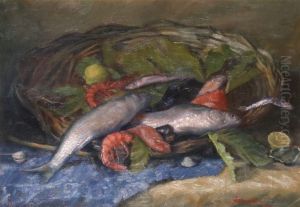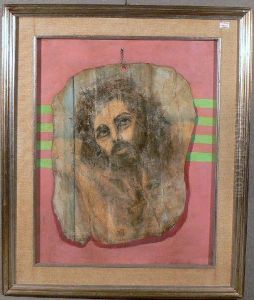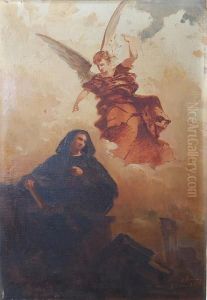G. Ferrari Paintings
Gaudenzio Ferrari was an Italian painter and sculptor of the Renaissance period, active mainly in Northern Italy. He was born in Valduggia, a small town in the then Duchy of Milan, around 1510. Despite the commonality of his last name, he is not related to the famous car manufacturer Enzo Ferrari.
Gaudenzio was initially trained by the Lombard painter Stefano Scotto, but his style was significantly influenced by Leonardo da Vinci, whom he may have met during Leonardo's stay in Milan. He later moved to Rome, where he was influenced by the works of Raphael and Michelangelo. After returning to Northern Italy, he worked in various places, including Milan, Vercelli, and Novara, incorporating the lessons he learned from the great masters into his own distinctive style.
Ferrari's works are characterized by their vivid colors and the emotional intensity of the figures. He was especially adept at fresco painting, a technique that involves applying water-based pigments to freshly applied plaster, which contributed to the vibrancy of his colors. Among his most famous works are the frescoes in the Santa Maria dei Miracoli in Saronno, the dome of the Santa Maria delle Grazie in Varallo, and the series of frescoes depicting the life of Christ in the Sanctuary of Our Lady of Blood in Re.
In addition to frescoes, Gaudenzio also created significant altarpieces and sculptures. His sculptural work often displayed a keen sense of emotion and movement, which was relatively progressive for his time. He was a pioneer in the region for integrating sculpture and painting within altar decorations, creating rich narrative scenes that were immersive and dramatic.
Gaudenzio Ferrari's legacy is that of a master who bridged the gap between the High Renaissance and Mannerism. His innovative use of color and composition had a significant influence on later artists in the Piedmont and Lombardy regions. He died in Milan in 1561, leaving behind a body of work that continues to be admired for its creativity and emotional power.


